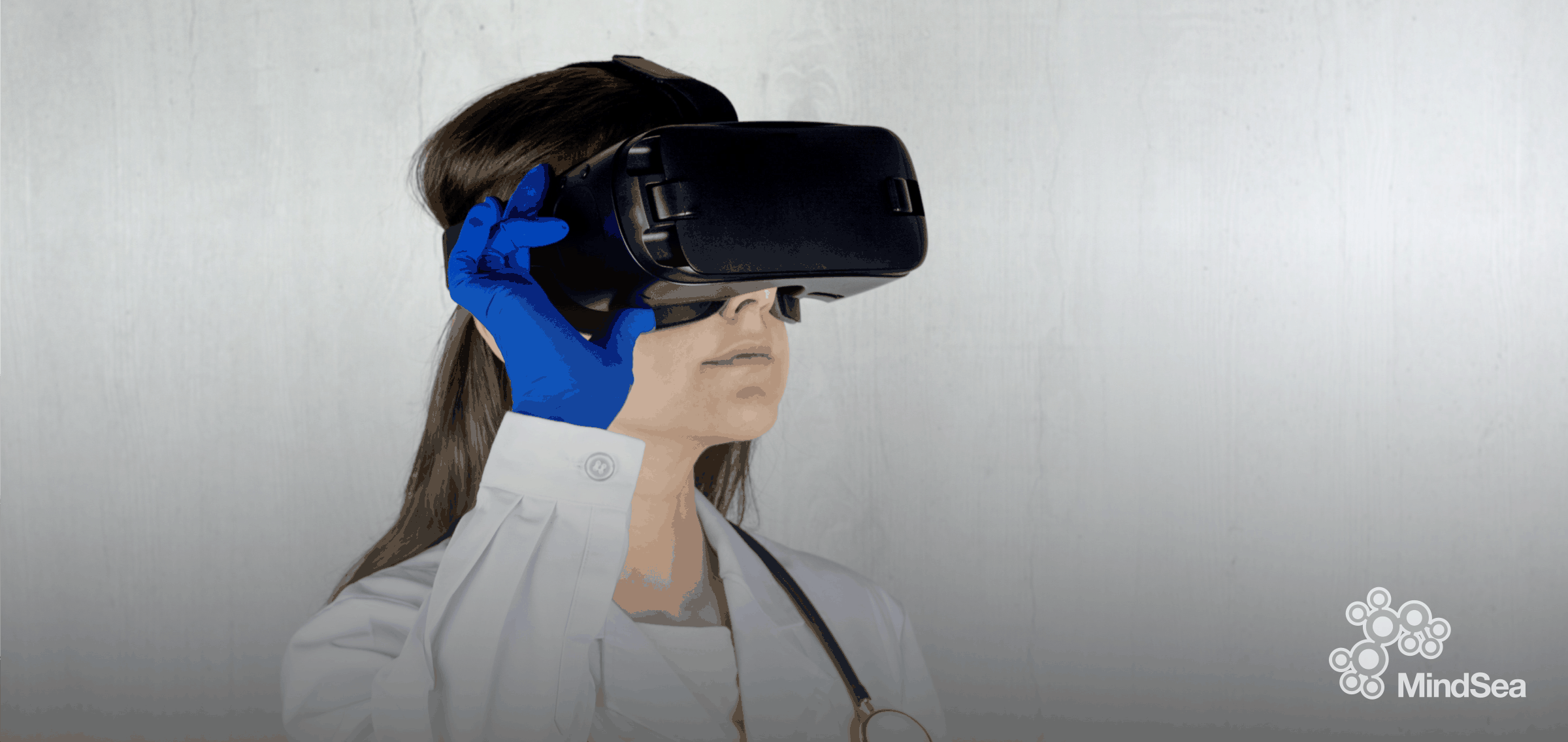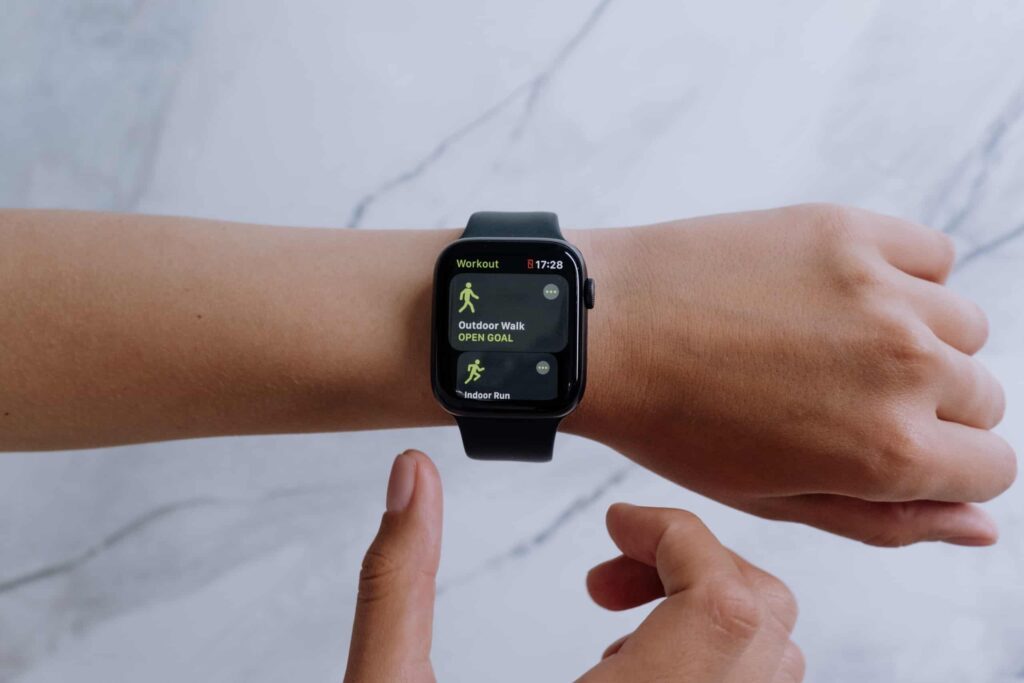Arriving to 2021, we’ve seen some of the most rapid and innovative technological advances in recent memory.
The global pandemic has forced many industries to evolve and adapt or risk becoming obsolete, not least among which is the healthcare industry.
Digital healthcare is not new—but stay at home orders and social distancing measures have made it more of a necessity. Patients still require care and need healthcare professionals to provide it.
This is where mHealth and telehealth come in and are changing the digital healthcare industry (and the world) for the better.
In the past eight months, demand for telehealth and mobile health apps that allow people to track their health and wellness has increased, as has the use of wearable medical devices.
And this demand is still growing. According to a Statista forecast, the digital healthcare industry is expected to increase nearly six times in size by 2026 to nearly 640 billion U.S. dollars.

Fascinating.
At least we think so. That’s why, in this blog post, we’re taking the time to walk you through the latest trends and research in this growing sector and why it’s important.
Let’s get into it:
Trend #1: There Is A Growing Need for Virtual Care
A recent CMA Discussion Paper on virtual care makes a number of points about the delivery of healthcare in Canada and how it’s affecting the industry.
The ongoing global pandemic that’s affecting us all is shaking industries to their cores and driving demand for digital technology. And the healthcare industry is leading the pack.
This is because healthcare, like many other industries, is a necessity. People and patients still need healthcare, but there is no longer easy access to healthcare providers.
The solution? Virtual care.
Virtual care refers to “virtual visits” that take place between patients and healthcare providers via communications technology such as, mhealth apps, telehealth appoints, and video conferencing and calls.
Companies around the world are improving and developing new technologies to raise the quality of virtual care as the demand continues to increase. The healthcare industry is going digital, and it’s not going to change anytime soon. Find out how you can create and integrate your very own mobile or digital product and take advantage of the growing virtual care sector.
Trend #2: AI Is Taking Over Healthcare (In All Areas)
Artificial intelligence (AI) is a lot closer than you think: Siri, Amazon, and even your Gmail account all use artificial intelligence and machine learning.
And now the healthcare industry has embraced the huge potential and benefits AI has to offer. For example, in a Mayo Clinic study, researchers found that applying AI in a widely available, inexpensive electrocardiogram (EKG) results in a simple and affordable indicator of early signs of heart failure.
Due to AI’s machine learning ability, it is able to quickly detect and help diagnose diseases, such as heart failure, that may be otherwise missed by a healthcare provider.
AI in digital healthcare will continue to help cut the costs of ongoing health procedures and devices for patients and to improve medical products and overall quality of care for all patients.

Trend #3: New Wearable Medical Devices Are More Convenient & Comfortable Than Ever
Wearable technologies offer a convenient and comfortable way to monitor many health and wellness concerns. And the wearable medical device industry is set to grow 25% in the next six years.
According to research from MedGagdet, healthcare technology companies are creating and producing wearable medical devices faster than ever due to the pandemic. Patients need to be able to monitor their health concerns without frequent visits to healthcare professionals’ offices and facilities.
Wearable medical devices aren’t bulky and unattractive as most may think, either. For example, Apple’s Apple Watch is able to detect atrial fibrillation (AFib) through the scanner on the back of the device.
With the improving wearable medical devices, more people will be able to monitor their own health and wellness safely (i.e., without having to visit a healthcare centre) and have more control over their wellbeing.
And with more wearable devices come more tracking apps and monitoring systems.
Trend #4: There Is (An Extremely) High Demand For Telehealth
With limited to no available face-to-face appointments with healthcare professionals, there is now a different way to conduct appointments: via telehealth.
These appointments may be as complex as seeking out a new drug regimen, or as simple as an annual check-up. Regardless of the appointment type, they are all necessary for patients.
The global pandemic is the primary reason behind telehealth’s broad adoption, but telehealth has actually been around for longer than we think. Canada was an early pioneer in the development of virtual care.
Now, telehealth can be conducted via phone, internet chat, or video calls and conferencing.
Better in-home technology, such as faster WiFi and more mobile devices, makes telehealth plausible for almost every patient in North America.
According to a 2019 consumer survey:
- 72% of people aged 35-44 are willing to use a video visit
- 61% of people aged 55-64 are willing to try virtual care visits
- 52% of people aged 65+ are open to using telehealth

Trend #5: Telemental Health Is Helping Patients Who Struggle With In-Person Appointments
Healthcare doesn’t just cover physical health; it also encompasses mental health, which is why the healthcare industry is also seeing a rise in telemental health.
Telemental health is a telehealth service that offers calls and video calls for adults 18 years of age or older who are seeking assessment or consultation in general psychiatry via videoconference.
A major benefit to telemental health services is that they give mental health providers the ability to serve patients from their own home and in a safe space. Some patients may have once found it difficult to leave the house and physically go to a mental health clinic, but now they are able to meet with a mental health provider via phone or video.
Along with telemental health, there are also more apps and tracking technology available today to monitor mental health.
Trend #6: There Is New & Increasing Demand For On-Demand Healthcare (And mHealth Apps)
Beyond telehealth, usage of medical technology such as on-demand healthcare and mobile health (mHealth) apps for consumers has also increased due to the pandemic.
According to a survey conducted in 15 major cities of the US, on average, it took 24 days for the new patients to get an appointment with a physician in 2019. And the wait is even longer now due to the global pandemic.
Patients still need access to health and wellness information and advice and to meet with healthcare professionals. And all of this can be done through on-demand healthcare and mHealth apps.
On-demand healthcare gives patients the ability to address a new or pre-existing condition with a healthcare professional by booking an appointment through an app or website, as well as accessing at-home treatments.
mHealth apps encompass a range of apps covering nearly every step of the patient’s journey, from prevention to diagnosis and from doctor’s visits to prescription refills. And it doesn’t stop there—mHealth offers wellness and fitness tracking to help the user conduct a healthy and happy lifestyle.
Trend #7: e-Prescriptions Are Giving Patients & Providers Easier Access To Medications
Electronic prescription (e-prescribing) is not a new technology. E-prescriptions give healthcare providers and patients the ability to prescribe drugs and other necessities via technology and limited interaction.
In fact, this has been the most common way of transferring prescriptions between healthcare professionals and pharmacies since the mid-2010s.
With increased mHealth and virtual care technology replacing in-person appointments and visits, there are increased e-prescriptions and e-prescription software and apps.
E-prescription technology is becoming more necessary for the healthcare industry. The technology needs to have increased privacy and be extremely user-friendly as people of all ages and techknowledge need to be able to use the apps.
Trend #8: 5G iS Revolutionizing The Healthcare Industry
According to recent research, 5G is going to improve and transform the healthcare industry significantly.
For example, people living in remote areas far from a healthcare professional centre can now use telehealth and video conferencing. However, this kind of communication does not always work, especially when it comes to sending large images such as scans and X-rays. This may be due to weak signal, network congestion, and lag, all of which makes communication more difficult and disrupt workflow.
With 5G, all of this and more will be solved and improved. With 5G, we can realize:
- Faster image and document transmission between patients and healthcare providers
- Increased and stronger WiFi for mHealth apps and technology
- Reliable, real-time remote monitoring via mHealth apps and wearable devices
By enabling all these technologies through 5G networks, healthcare systems can improve the quality of care and patient experience, reduce the cost of care, and more.

Trend #9: There Is An Increasing Demand For Privacy In Digital Health
With any kind of digital app, software, or user technology, there is always concern around privacy and security—especially with healthcare. Information that is shared and stored in these mHealth apps and through telehealth is all sensitive and extremely private.
Healthcare is a very private subject and needs to be heavily regulated from a privacy standpoint. Because of this, new technology companies are being created for healthcare privacy and security.
The most effective way to control privacy and security is to build it directly into the product or technology. But for products that already exist, there needs to be a heightened push to install and build privacy measures.
Ensure that your company’s mobile product is armed with the best security features.
Stay Up To Date With MindSea
The healthcare industry is changing faster than the speed of light. The global pandemic, stay at home orders, and social distancing measures have caused digital health to become a necessity.
Patients still need care and healthcare providers still need to monitor, administer, and provide it. The solution: virtual care, mHealth apps, and more.
Partner with us to build your mobile product and take advantage of the growing digital healthcare industry.



